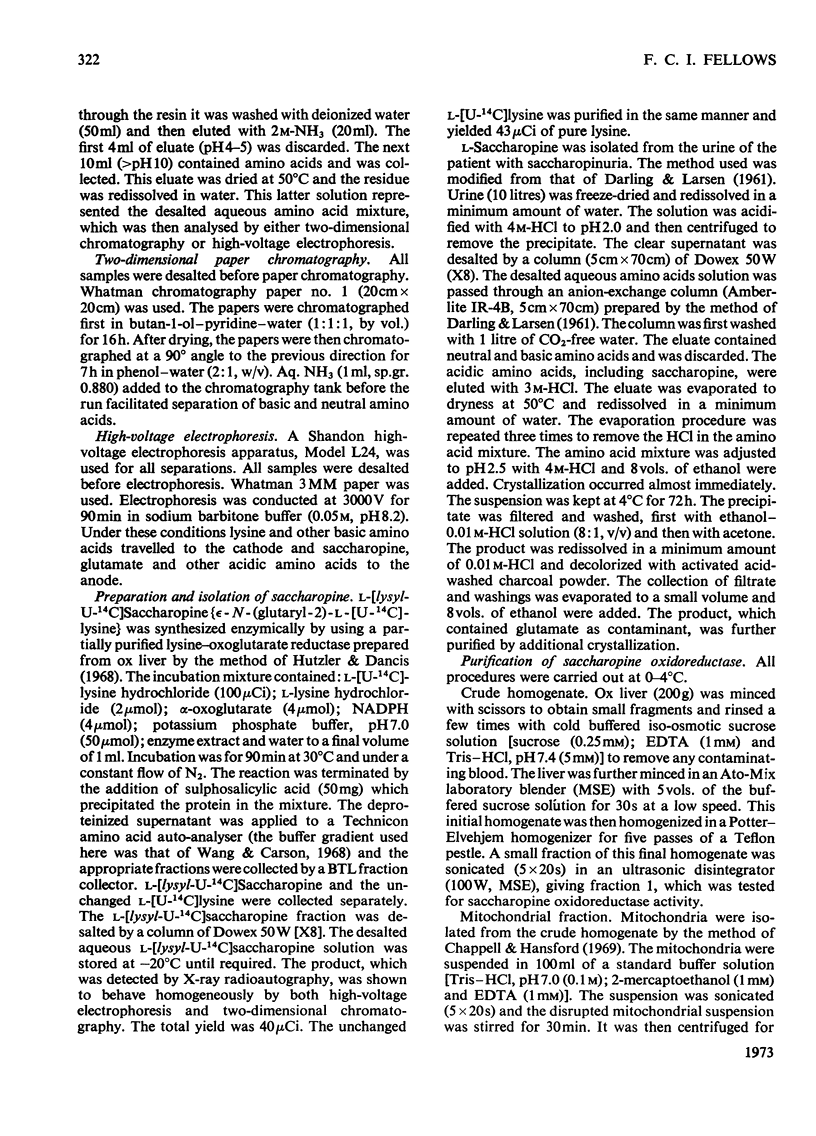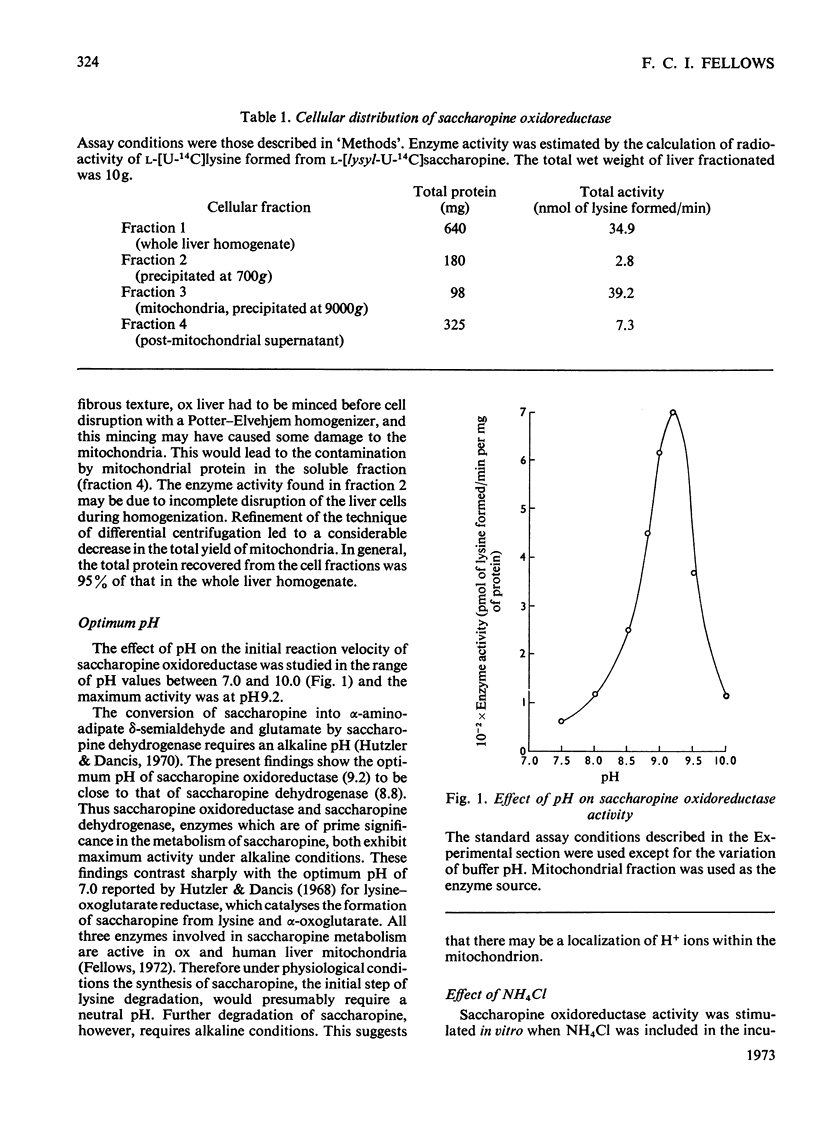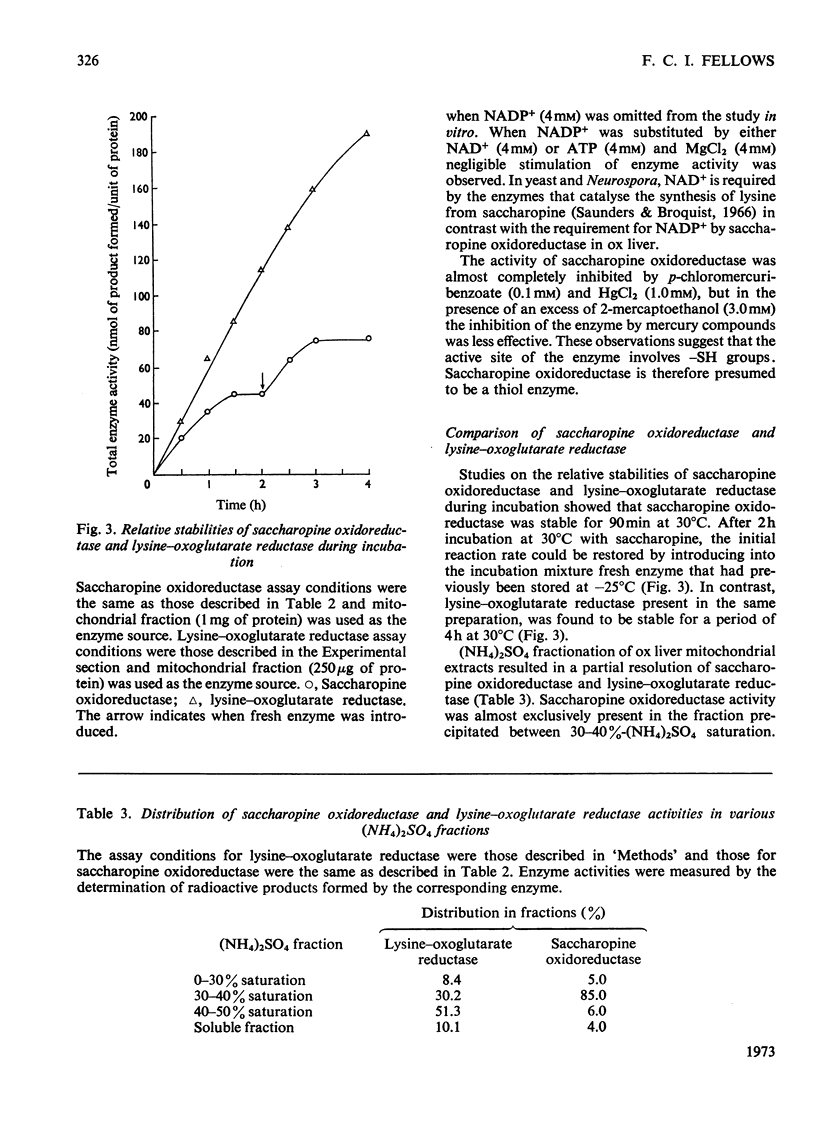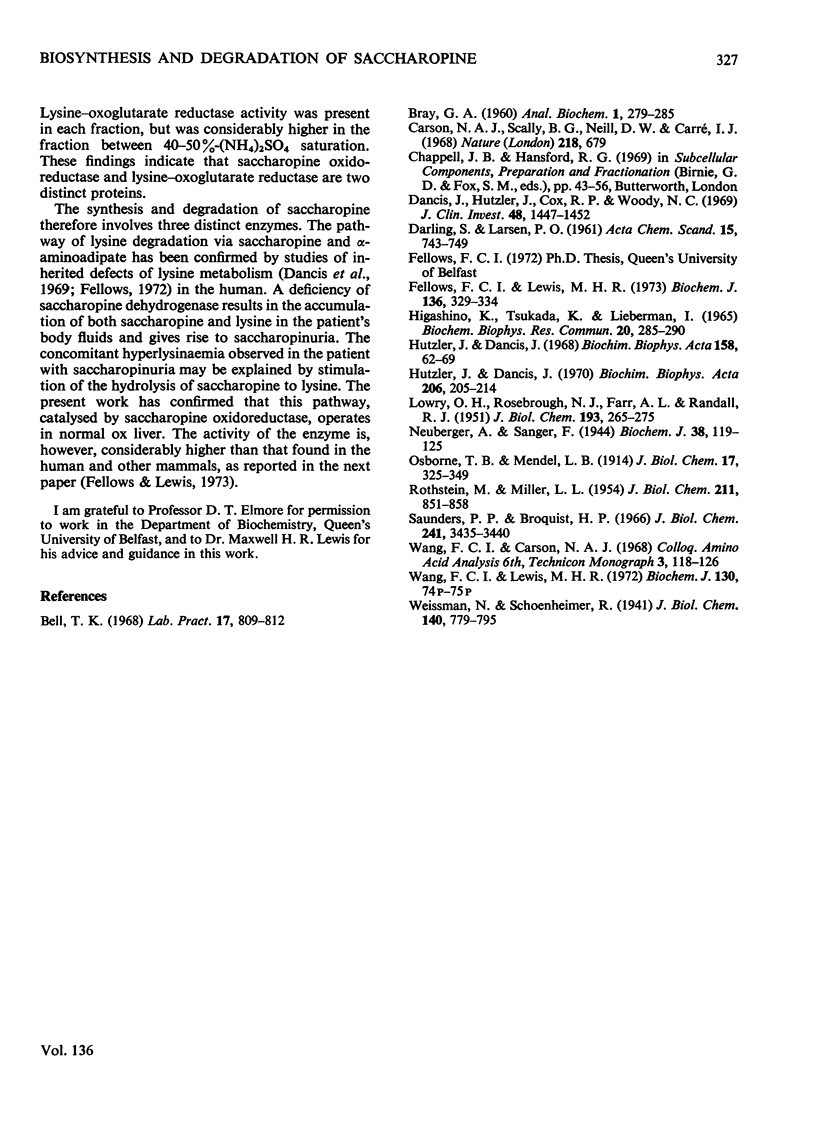Abstract
Lysine–2-oxoglutarate reductase was prepared from ox liver and its characteristics were examined. Its activity was totally inhibited in the presence of NH4Cl. Under conditions that inhibit saccharopine formation, and in the presence of NADP+, ox liver mitochondria were found to catalyse the hydrolysis of saccharopine to lysine and α-oxoglutarate. The enzyme involved was named saccharopine oxidoreductase. It was partially purified and separated from lysine–oxoglutarate reductase. Comparison of the properties of these two enzymes showed that saccharopine degradation was stimulated under conditions that inhibit its formation. The effect of pH, various cofactors and stability during incubation confirm that saccharopine biosynthesis from, and degradation to, lysine are catalysed by two distinct enzymes.
Full text
PDF






Selected References
These references are in PubMed. This may not be the complete list of references from this article.
- Carson N. A., Scally B. G., Neill D. W., Carré L. J. Saccharopinuria: a new inborn error of lysine metabolism. Nature. 1968 May 18;218(5142):679–679. doi: 10.1038/218679a0. [DOI] [PubMed] [Google Scholar]
- Dancis J., Hutzler J., Cox R. P., Woody N. C. Familial hyperlysinemia with lysine-ketoglutarate reductase insufficiency. J Clin Invest. 1969 Aug;48(8):1447–1452. doi: 10.1172/JCI106110. [DOI] [PMC free article] [PubMed] [Google Scholar]
- Fellows F. C., Lewis M. H. Lysine metabolism in mammals. Biochem J. 1973 Oct;136(2):329–334. doi: 10.1042/bj1360329. [DOI] [PMC free article] [PubMed] [Google Scholar]
- Higashino K., Tsukada K., Lieberman I. Saccharopine, a product of lysine breakdown by mammalian liver. Biochem Biophys Res Commun. 1965 Jul 26;20(3):285–290. doi: 10.1016/0006-291x(65)90361-x. [DOI] [PubMed] [Google Scholar]
- Hutzler J., Dancis J. Conversion of lysine to saccharopine by human tissues. Biochim Biophys Acta. 1968 Apr 16;158(1):62–69. doi: 10.1016/0304-4165(68)90072-x. [DOI] [PubMed] [Google Scholar]
- Hutzler J., Dancis J. Saccharopine cleavage by a dehydrogenase of human liver. Biochim Biophys Acta. 1970 May 13;206(2):205–214. doi: 10.1016/0005-2744(70)90104-x. [DOI] [PubMed] [Google Scholar]
- LOWRY O. H., ROSEBROUGH N. J., FARR A. L., RANDALL R. J. Protein measurement with the Folin phenol reagent. J Biol Chem. 1951 Nov;193(1):265–275. [PubMed] [Google Scholar]
- Neuberger A., Sanger F. The metabolism of lysine. Biochem J. 1944;38(1):119–125. doi: 10.1042/bj0380119. [DOI] [PMC free article] [PubMed] [Google Scholar]
- ROTHSTEIN M., MILLER L. L. The conversion of lysine to pipecolic acid in the rat. J Biol Chem. 1954 Dec;211(2):851–858. [PubMed] [Google Scholar]
- Saunders P. P., Broquist H. P. Saccharopine, an intermediate of the aminoadipic acid pathway of lysine biosynthesis. IV. Saccharopine dehydrogenase. J Biol Chem. 1966 Jul 25;241(14):3435–3440. [PubMed] [Google Scholar]


